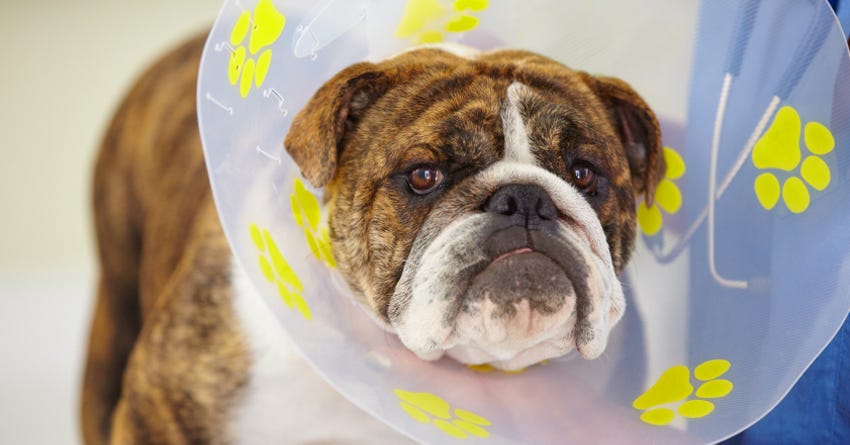It’s all fun and games until someone ends up in a cone.
Many unfortunate pets have had to deal with the cone (aka, Elizabethan collar or e-collar)- a useful tool to keep pets from licking their wounds, itchy spots and surgical sites. Injuries, skin lesions and surgery in pets is stressful enough. But keeping pets safe and quiet after the vet’s done her job is a whole other hurdle that most pet owners don't think about until they have to.
Here are my simple suggestions to keeping pet's safe while sporting their cone of shame:
Talk to Your Veterinarian and Their Staff
You know your pet best but we’ve got the know-how. Make sure you discuss your pet’s post-treatment behavior and ask the right questions. For example:- She’s a licker. Will a cone be enough?
- He’s a crazy guy with tons of energy. Have any suggestions for keeping him clam?
- She chews at the bars of the crate. What else can I do to keep her quiet and restrained?
Commit to Safety
Too often I find that pet owners are unwilling to do what it takes to keep their pets from hurting themselves. Everyone knows that the cone of shame is an ignominious answer to a simple problem, but what’s the alternative?Bandaging and clothing can be useful (as can many of the cone substitutes, like those air-filled collars and neck braces), but they’re not always up to the job. Yes, the dreaded satellite dish and/or drugs are often the only solution.
 © iStock Photo / michellegibson
© iStock Photo / michellegibsonBe Flexible
Every pet is different. Some will lick, some will bite, others will leave the area alone until a week later, at which point they’ll tear off all manner of wrappings, chew through several layers of sutures, and leave their wounds hanging out. Others will act like nothing ever happened.All of the above means that you have to work with your pet’s personality to help keep him safe. A combination of methods might be your only choice.
Every Injury is Different
Just because you got through the last scrape with nary a lick at her hot spot doesn’t mean you’ll get lucky the next time. Maybe the next time it’ll itch more or hurt more, she’ll be bored one night, the cone will be looser, the T-shirt will fail, the bandage will fall off … you get the picture. Always be prepared.Drugs Can Be Your Friend
I know it’s unpopular to say so but I’ve found that some dogs must be sedated if they are going to heal properly. Cats are almost always OK with a cone and confinement but when dogs won’t tolerate a crate after orthopedic surgery (for example), sedatives should be employed. After all, you do NOT need that expensive orthopedic implant to fail. You do NOT want another surgery.This is why veterinarians are constantly devising new protocols to keep pets calm. And, so you know, not every method of sedation results in a doped up, unhappy dog. It’s quite possible to achieve a happy medium where drugs can make dogs quieter without sacrificing their safety or comfort.
Ultimately, pets will be pets. Which is to say that, as animals, pets sometimes have a way of treating their own aches, pains, lumps and other lesions with a vigorous dose of self mutilation. And it’s up to us, their veterinarians and owners, to ensure that doesn’t happen!


